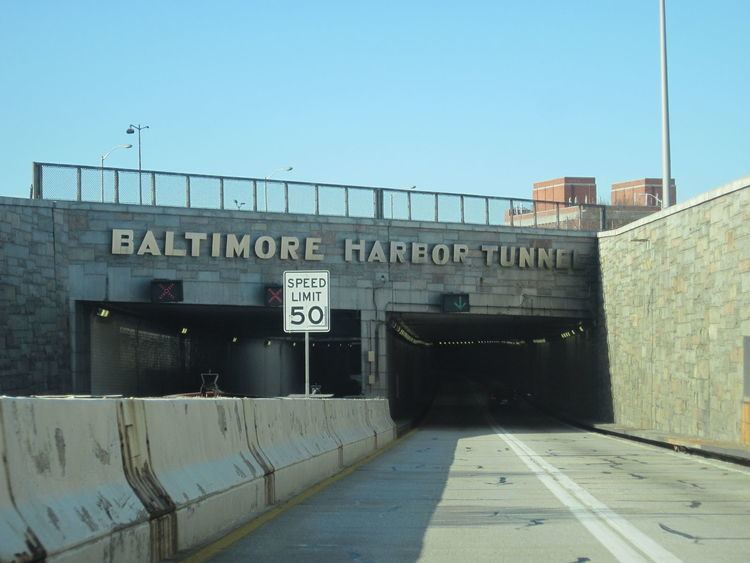Route I-895 Toll $4 (both directions) Height 4.27 m Road Interstate 895 Architect Ole Singstad | Operator MdTA No. of lanes 4 Opened 29 November 1957 | |
 | ||
Length 7,650 ft. (2,332 meters) (1.45 mi.) Owner Maryland Transportation Authority Similar Fort McHenry Tunnel, Francis Scott Key Bridge, Thomas J Hatem Memorial, Governor Harry W Nice Me, Chesapeake Bay Bridge | ||
Baltimore harbor tunnel
The Baltimore Harbor Tunnel is a pair of two-lane road tunnels carrying Interstate 895—the Harbor Tunnel Thruway—under the Patapsco River southeast of downtown Baltimore, Maryland, United States.
Contents
- Baltimore harbor tunnel
- Map of Baltimore Harbor Tunnel Trwy Baltimore MD USA
- Route description
- History
- References
Map of Baltimore Harbor Tunnel Trwy, Baltimore, MD, USA
Route description
The pair of tunnels is 1.45 mi. 7,650 feet (2.33 km) long, stretching from the south shore of the Patapsco River to the north shore near Dundalk. Each tunnel is 22 feet (6.7 m) wide and 14 feet (4.3 m) high, and accommodates two lanes in each direction. The maximum speed within the tunnel is 50 miles per hour (80 km/h).
Both portals have ventilation buildings, with a total of 32 fans in place to replace the air within the tunnels, which is drawn in through the tunnel floors and exhausted through the tunnel ceilings. The tubes themselves range from a depth of 50 feet (15.2 m) below ground to 101 feet (30.8 m) below ground.
The tunnel and Thruway are operated by the Maryland Transportation Authority, which currently charges a toll of $4 for cars in both directions. Tolls may be paid with cash or with E-ZPass.
History
The tunnel and approaches were designed by Singstad and Baillie, a New York-based engineering firm specializing in tunnel design, in association with the J.E Greiner Company, a local Baltimore-based firm. The tunnel was formed out of 21 310-foot (94 m) sections individually submerged into the harbor and secured with rocks and backfill; the first of these tunnel segments was sunk on April 11, 1956. The remainder of the tunnel was constructed using the cut-and-cover method, extending from the submerged tubes to the north and south portals.
The tunnel opened on November 29, 1957 (along with most of the Thruway), nearly two months ahead of schedule. At the time, the toll was forty cents. The day the tunnel was opened, it experienced heavy traffic for the first time as thousands of motorists traveled north to Philadelphia to watch the 1957 Army–Navy football game.
Shortly after the nearby Fort McHenry Tunnel opened in 1985 — making up the final link of Interstate 95 in Maryland — the Harbor Tunnel was closed in phases for extensive rehabilitation. It was fully reopened by 1990.
In November, 2007, the 50th anniversary of the tunnel serving travelers was observed.
